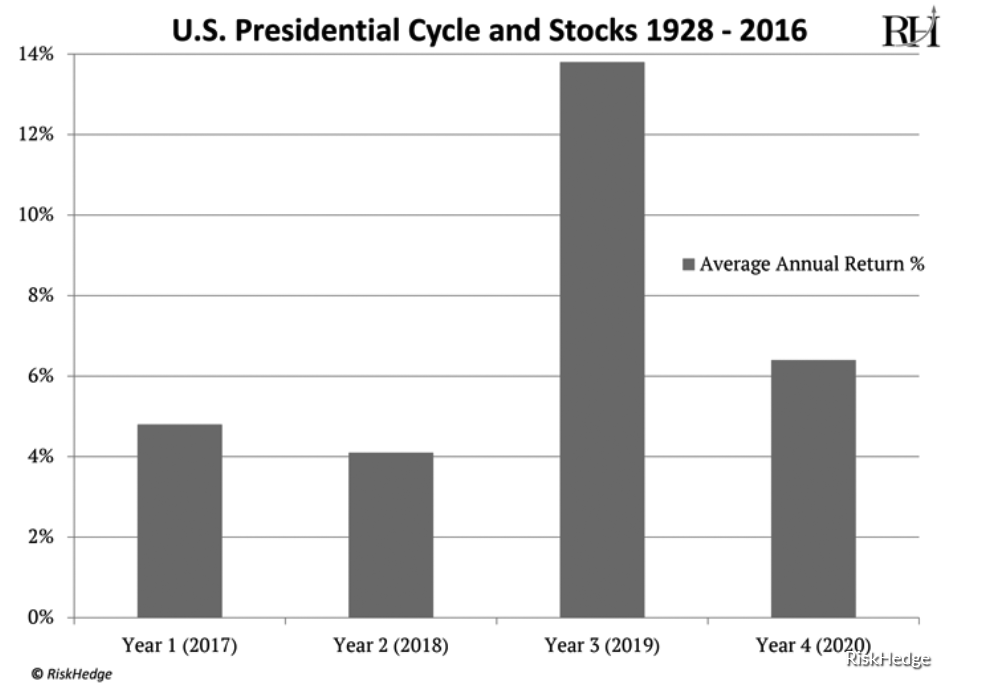Since mid-October, markets have fallen lower as large technology stocks continued to sell off. Looking ahead, we are confident with U.S. GDP growth, low unemployment and inflation, despite the Federal Reserve’s expectations of continued interest rate hikes.
Oil has declined from its 30 percent peak this year into negative territory. Rising rates, weak emerging market currencies and slowing global economic growth factored into the plunge. As consumers of oil, lower prices could act as a stimulus because consumers are happier to be paying less at the pump, so they will spend the extra money on other types of goods. This also lowers input costs for manufacturers, as oil goes into many finished products.
Midterm elections have also proved well for the markets historically. Stocks have gained, on average, 17 percent after midterm elections and they have risen consecutively after every midterm election since 1946. That’s 18 out of 18 times. Also in the presidential cycle, the third year in a president’s term, has been previously the best for stock market returns.
In our portfolio, we have taken earlier measures toward preventing excess loss of capital during market corrections by purchasing a gold ETF and switching some of our fixed income allocations toward floating rate bonds. Gold acts as a haven during market downturns, while the floating rate bonds leave us less exposed to changes in monetary policy.
Although we have reduced risk by diversifying ourselves, we aren’t afraid to add exposure to high growth companies. The technology sell offs have led to lower multiples and companies selling at attractive discounts, which in my opinion represents a great buying opportunity.
In the short term, SIMM may be following Warren Buffett’s lead and buying the dip in the event of a bigger market correction. Until we see any fundamental indicators of a slowing U.S. economy, SIMM is expecting to stay on course.
By Adam Talmadge, Staff Writer
talmadaj14@bonaventure.edu






